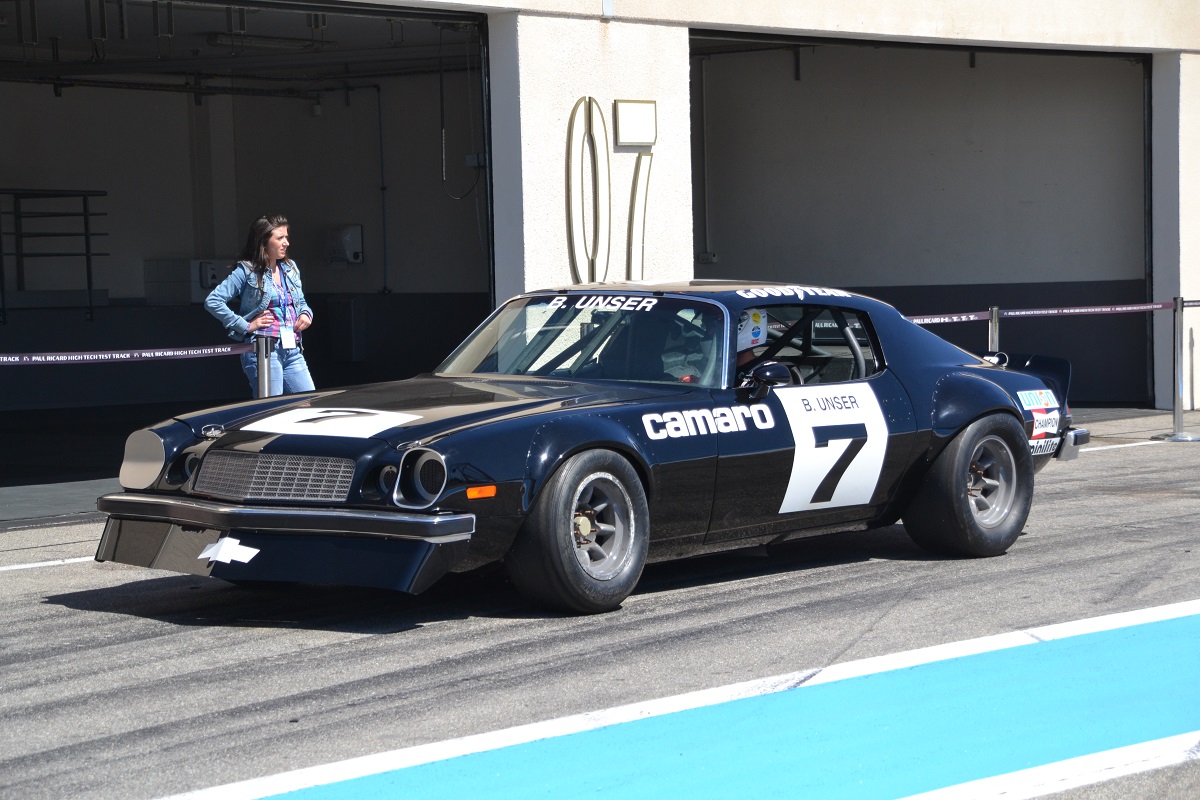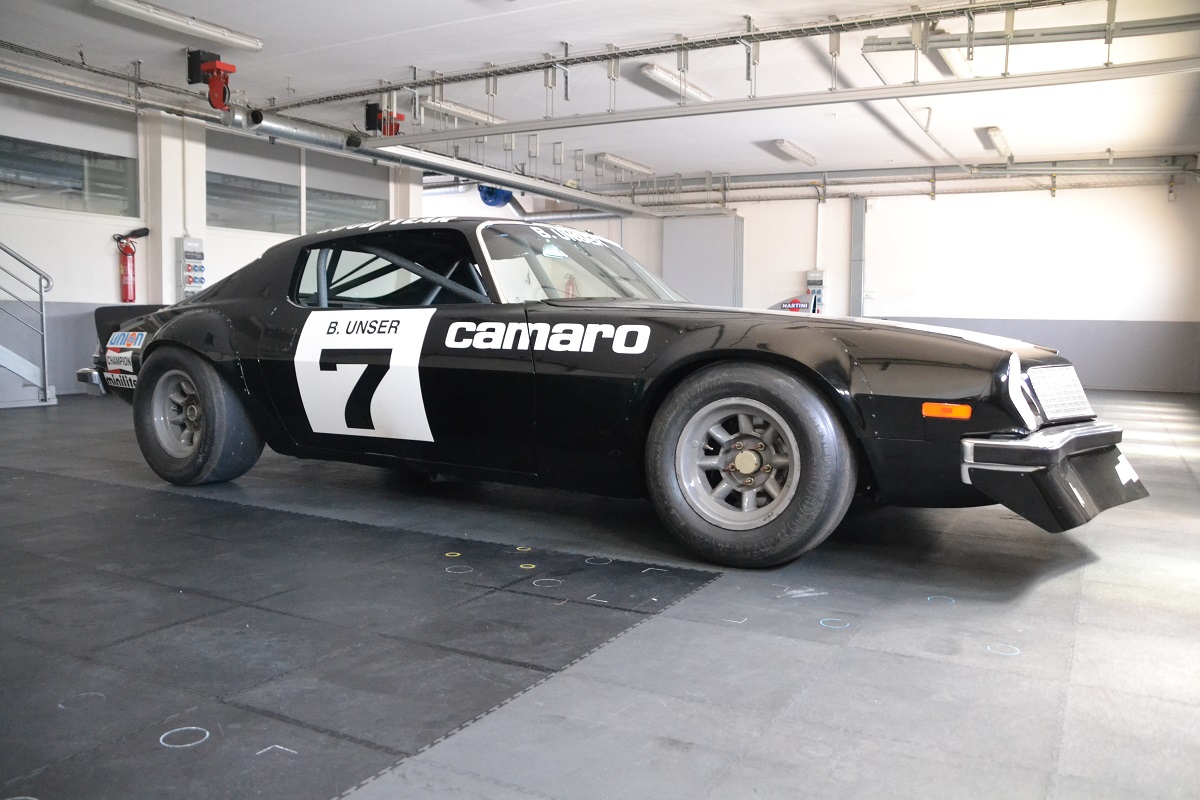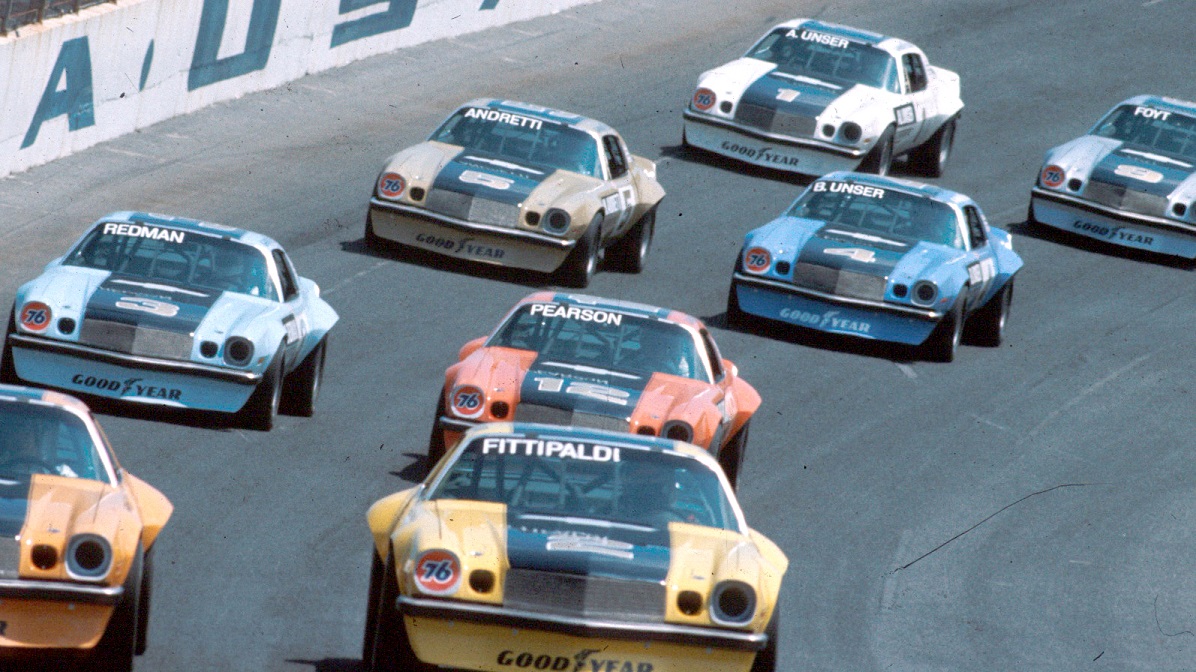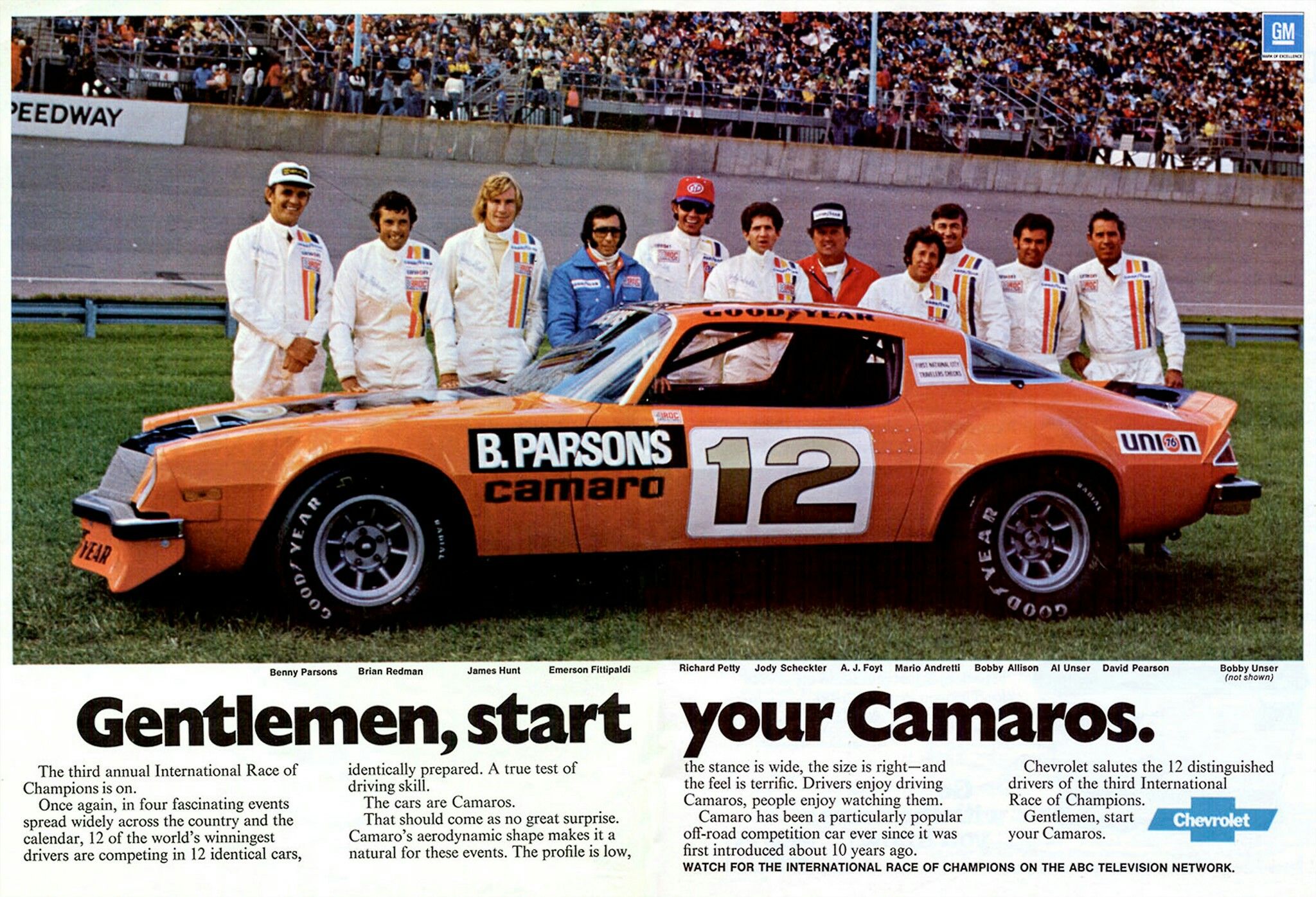The first IROC Camaro was a street car with desire
Propelled by a racing image and the novelty of having a car that seemed to declare, “I rock,” the IROC-Z Camaro supplanted the Z28 as the line’s top dog from 1985–90. The Camaro, however, had become an IROC star long before that.
IROC, of course, stands for International Race of Champions, an all-star series started in 1973 that invited the world’s top 12 drivers from sports car, oval-track, and Formula 1 racing to compete against each other in identically-prepared cars.
After using Porsche Carrera RSRs for the first season, the IROC switched to Camaros due to their lower maintenance costs. For Camaro’s first two IROC seasons,, racecar and road car were close siblings.
Chevy, which promoted the IROC connection in Camaro’s advertising, then entered a licensing deal in 1984 that allowed it to use the IROC name on the production car. Although Chevy touted the “similarity” between the IROC race car and the showroom model, the racer was by then essentially a NASCAR Winston Cup chassis with Camaro body panels.
The first season in Porsches

Business and racing impresario Roger Penske developed the IROC with Les Richter, a former football player turned racing executive, and Mike Phelps, a television marketing agent.
“Nobody had ever tried taking drivers from various series like Formula 1, road racing, IndyCar, and stock car racing and putting them in identically-prepared cars,” says Jay Signore, who managed Penske Racing for 12 years and ran the IROC for 25.
Signore was personal friends with racing legend and fellow Jersey boy Mark Donohue, who had joined Penske Racing in the 1960s and had a winning career in Can Am and Trans Am racing. “We started racing against each other in Elva Couriers,” he says.
The IROC series included four races. The first season, driving Porsches, three races were held at Riverside in California over one weekend in October 1973, and the final was at Daytona the following February. Donohue won the first IROC championship before taking a break from driving to manage Penske’s race shop in Reading, Pennsylvania. (Donohue died in a crash during practice for the Austrian Grand Prix in August 1975.)
Signore recalls that the Porsches were sold immediately after Daytona. Attention turned to developing the Camaro, drawing on Penske’s experience winning the 1968 and 1969 Trans Am championships in Camaros driven by Donohue.
“I think there were probably a lot of sports car fans that tuned into the first series, and some may have been disappointed at the switch,” Signore says, “but the series gained popularity with the Camaros as time went by.”
Inside the first IROC Camaros


The Camaros for IROC started as 1974 models equipped with the 350-cubic-inch V-8 and four-speed stick. Penske’s crew stripped out the interiors and installed roll cages, instrument panels, a racing seat, and Simpson fire bottles.
Remarkably, the Camaros retained their steel bodywork. The basic front coil spring and rear leaf spring suspension setup also remained, but with much higher spring rates and Delrin bushings in place of the stock rubber pieces. Holman & Moody supplied Ford rears with full-floating axles. From the Corvette came spindles, hubs, and four-wheel disc brakes, but using a power-assist unit from a full-size Chevy station wagon. Power steering was used, as well. Wheels were 15×8-inch Minilites, and bulging fender flares were pop-riveted to the body to cover the Goodyear racing tires.
The jutting fiberglass front spoiler, made at Penske’s shop, was bolted to the Camaro’s stock bumper. The Camaros each weighed 3200 pounds, a whopping 1100 more than the Porsches they replaced.
Traco Engineering built the 336-cubic-inch small-block Chevy V-8s, using off-the-shelf Chevy and aftermarket performance parts. All engines were dyno-tuned to 440 horsepower, plus or minus no more than 5 hp, and a cutoff limited revs to 7200 rpm for durability. The dry-sump oil system’s five-gallon tank sat in the space of the removed front passenger seat. The Borg Warner Super T-10 four-speed transmission, which was new for the production Camaro that year, was retained, while a 30-gallon fuel cell replaced the stock tank.
Signore explains that the Camaros were not built for ultimate speed but rather for equal performance and durability at a reasonable cost. Fifteen were built in the summer of 1974, including three backup cars. Stock car racers Dave Marcis, Jim Sauter, and Dick Trickle helped set up the cars.


“We relied on driver feedback to tune the handling so drivers from different series were comfortable,” Signore says.
In the 1974–75 IROC, four drivers came from NASCAR Winston Cup, four from Formula 1, and three from USAC Champ Car. George Follmer came from SCCA racing and remained with IROC as a development driver throughout the series. To keep an even playing field, racers drew for the cars at each race, and their custom-fit racing seats and name decals would then be installed.
In another departure from the first IROC season, two road races were run at Riverside, but the other two were on the Michigan International Speedway and Daytona ovals. Bobby Unser won the championship. The following season featured a similar mix of drivers and the same races, and A.J. Foyt won the championship, bagging a $50,000 prize.
And then it was time for new cars.
A new phase for IROC

“The Camaros were built for road racing, not for the high g-loads of the high banks,” Signore says. “Because of that, the later cars were built like NASCAR stock cars.”
For the 1977–80 IROC seasons, Penske had NASCAR builder Banjo Matthews construct 15 new Camaros using a tube-frame chassis and a body blending stock Camaro and fiberglass panels. The subsequent 1984–90 car followed a similar pattern. (The series wasn’t from 1980–83.)
Signore says most of the 1974 IROC Camaros were sold off to SCCA racers. Four are believed to still exist, including the #7 car (1Q87H4N221708). After Bobby Unser, Emerson Fittipaldi, and Bobby Allison each won a race in the car in 1974, #7 was pulled for the season finale at Daytona, but Signore dismisses any “lucky 7” legend. “It’s just that we had a field full of championship drivers.”
GTC, a classic car dealership in Carnoux-en-Provence, France, acquired the #7 car in 2008, completed a thorough restoration, and is now offering it for sale, along with race logbooks and other historical documentation.
Chevy dropped the IROC series after the 1989–90 season, with Dodge picking it up for 1991–95. Pontiac Firebird bodies were used from ’95 until IROC crossed its own finish line in 2006.
Twelve years after the series’ demise, no car is more closely tied to IROC history than Camaro. And no IROC Camaro had closer ties to its street sibling that those that fought for track supremacy during the 1974–75 and ’75–76 seasons.




